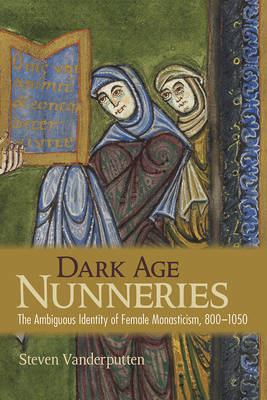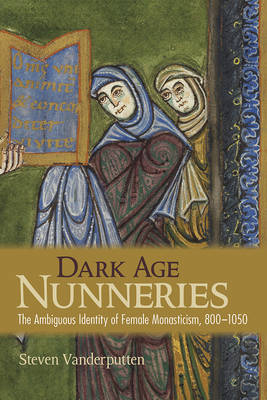
- Retrait gratuit dans votre magasin Club
- 7.000.000 titres dans notre catalogue
- Payer en toute sécurité
- Toujours un magasin près de chez vous
- Retrait gratuit dans votre magasin Club
- 7.000.000 titres dans notre catalogue
- Payer en toute sécurité
- Toujours un magasin près de chez vous
Dark Age Nunneries
The Ambiguous Identity of Female Monasticism, 800-1050
Steven VanderputtenDescription
In Dark Age Nunneries, Steven Vanderputten dismantles the common view of women religious between 800 and 1050 as disempowered or even disinterested witnesses to their own lives. It is based on a study of primary sources from forty female monastic communities in Lotharingia--a politically and culturally diverse region that boasted an extraordinarily high number of such institutions. Vanderputten highlights the attempts by women religious and their leaders, as well as the clerics and the laymen and -women sympathetic to their cause, to construct localized narratives of self, preserve or expand their agency as religious communities, and remain involved in shaping the attitudes and behaviors of the laity amid changing contexts and expectations on the part of the Church and secular authorities.
Rather than a "dark age" in which female monasticism withered under such factors as the assertion of male religious authority, the secularization of its institutions, and the precipitous decline of their intellectual and spiritual life, Vanderputten finds that the post-Carolingian period witnessed a remarkable adaptability among these women. Through texts, objects, archaeological remains, and iconography, Dark Age Nunneries offers scholars of religion, medieval history, and gender studies new ways to understand the experience of women of faith within the Church and across society during this era.
Spécifications
Parties prenantes
- Auteur(s) :
- Editeur:
Contenu
- Nombre de pages :
- 330
- Langue:
- Anglais
Caractéristiques
- EAN:
- 9781501715945
- Date de parution :
- 15-05-18
- Format:
- Livre relié
- Format numérique:
- Genaaid
- Dimensions :
- 152 mm x 229 mm
- Poids :
- 648 g







